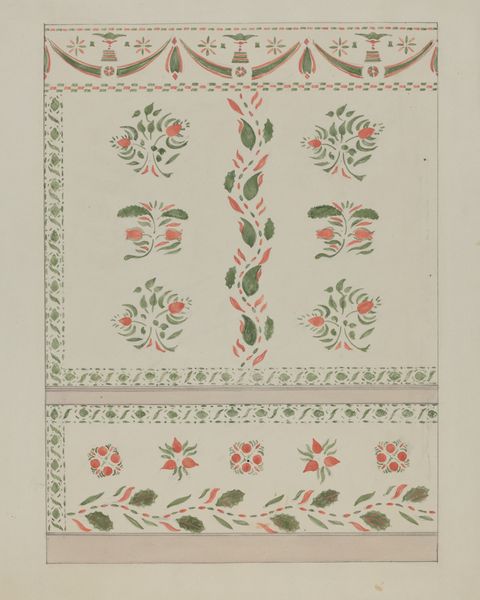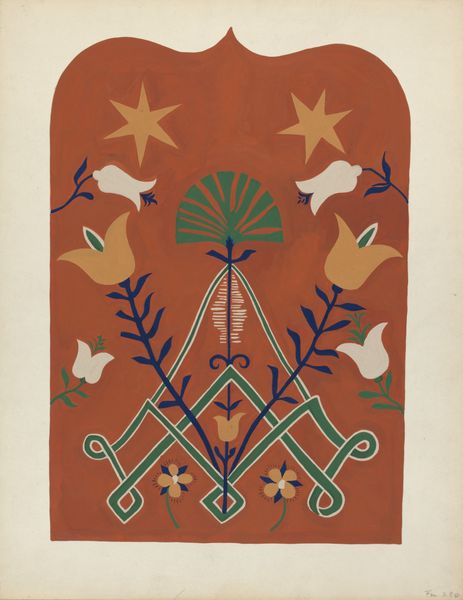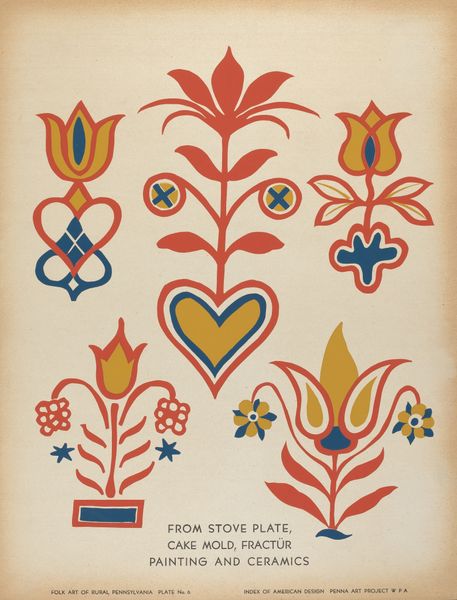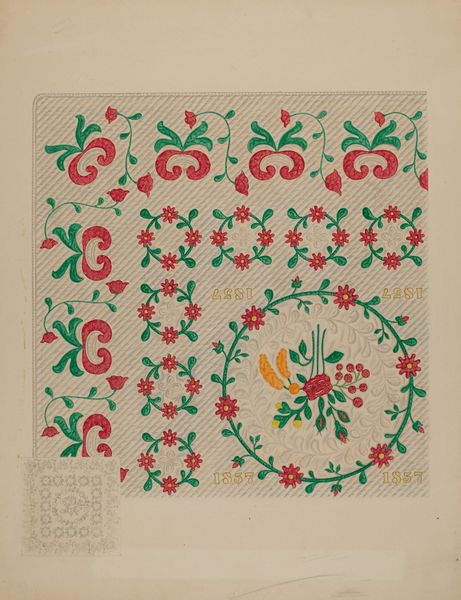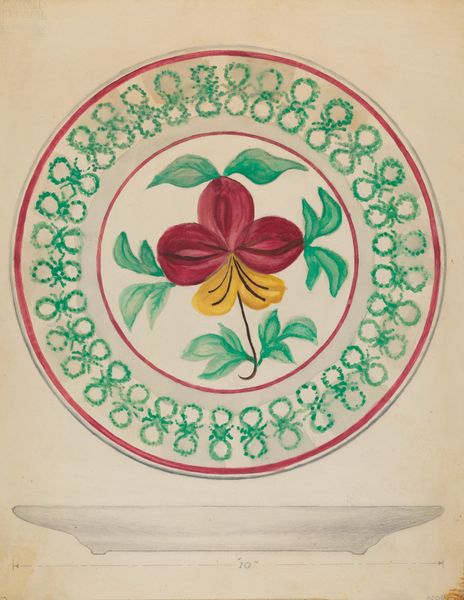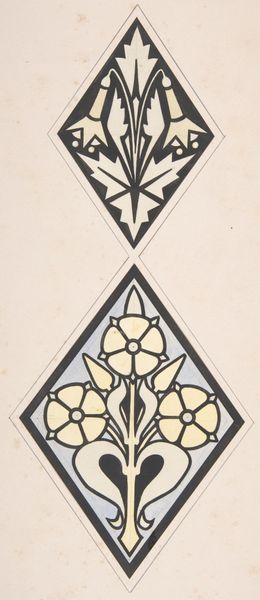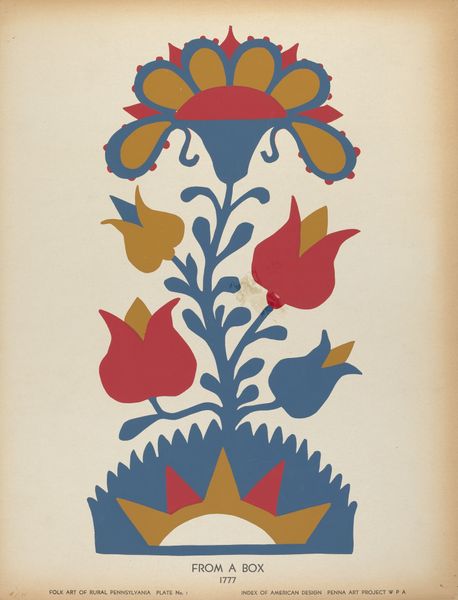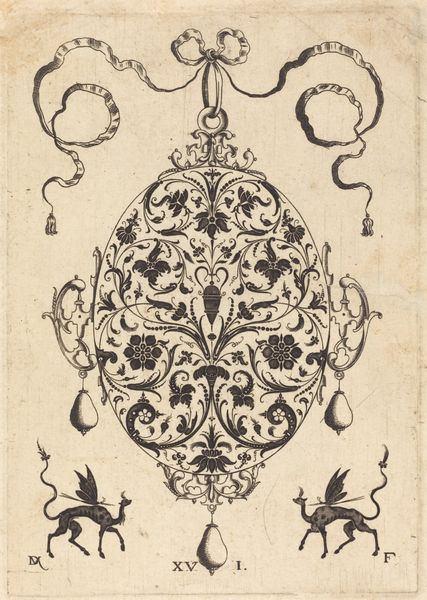
drawing, stencil, paper
#
drawing
#
organic
#
pattern
#
stencil
#
paper
#
pattern background
#
folk-art
#
organic pattern
#
geometric
#
decorative-art
Dimensions: overall: 35.3 x 27.8 cm (13 7/8 x 10 15/16 in.)
Copyright: National Gallery of Art: CC0 1.0
Curator: Oh, I find this instantly calming! The colours, the simple composition... Editor: "Stencilled Wall," created by Ray Holden sometime between 1936 and 1942, definitely offers a moment of quiet. But let’s not mistake that tranquility for simple decoration. These were turbulent times. Curator: True, but something about it feels… homey. It reminds me of my grandmother's kitchen wallpaper, maybe? Editor: Wallpaper, textiles, folk art traditions—these forms of creative expression are often overlooked in discussions of "high art," but that's precisely where their power lies. Think about who is typically excluded from formal art institutions and what their lives look like. Curator: Hmm, the repetitive nature could definitely be symbolic. A form of meditative escapism perhaps, in the face of such hardship? Or the labour intensive craft offering a steady, rhythmic activity? I do like the stylized, almost abstracted flowers above this striking trellis. Editor: The choice of stencil as a medium is important, too. It allows for repeatability, for the democratic proliferation of pattern and image. There’s something inherently accessible, even subversive, in embracing this technique. It could function to reclaim public spaces for individual artistry during the rise of totalitarianism, and that bold splash of crimson might mean more than just "flower." Curator: That really throws the geometric lattice pattern into a new light, I hadn't thought about it like that, with the period it was created. The bold juxtaposition really holds tension and potential now, the hand-made versus rigid and controlled, and who is allowed access and inclusion? Editor: Right. Consider how traditional craft techniques historically offered economic independence to women and marginalized communities. The history is interwoven in every layer of the art. Curator: It's fascinating how what seems like a gentle, decorative drawing on paper actually speaks volumes about resistance and resourcefulness! This humble stencil carries far more weight now, seeing through the lense of cultural empowerment. Editor: Precisely, which brings us back to our opening sentiment. Never mistake apparent simplicity for the absence of depth, whether in art, history, or even in the wallpaper in our grandmothers' kitchens.
Comments
No comments
Be the first to comment and join the conversation on the ultimate creative platform.


